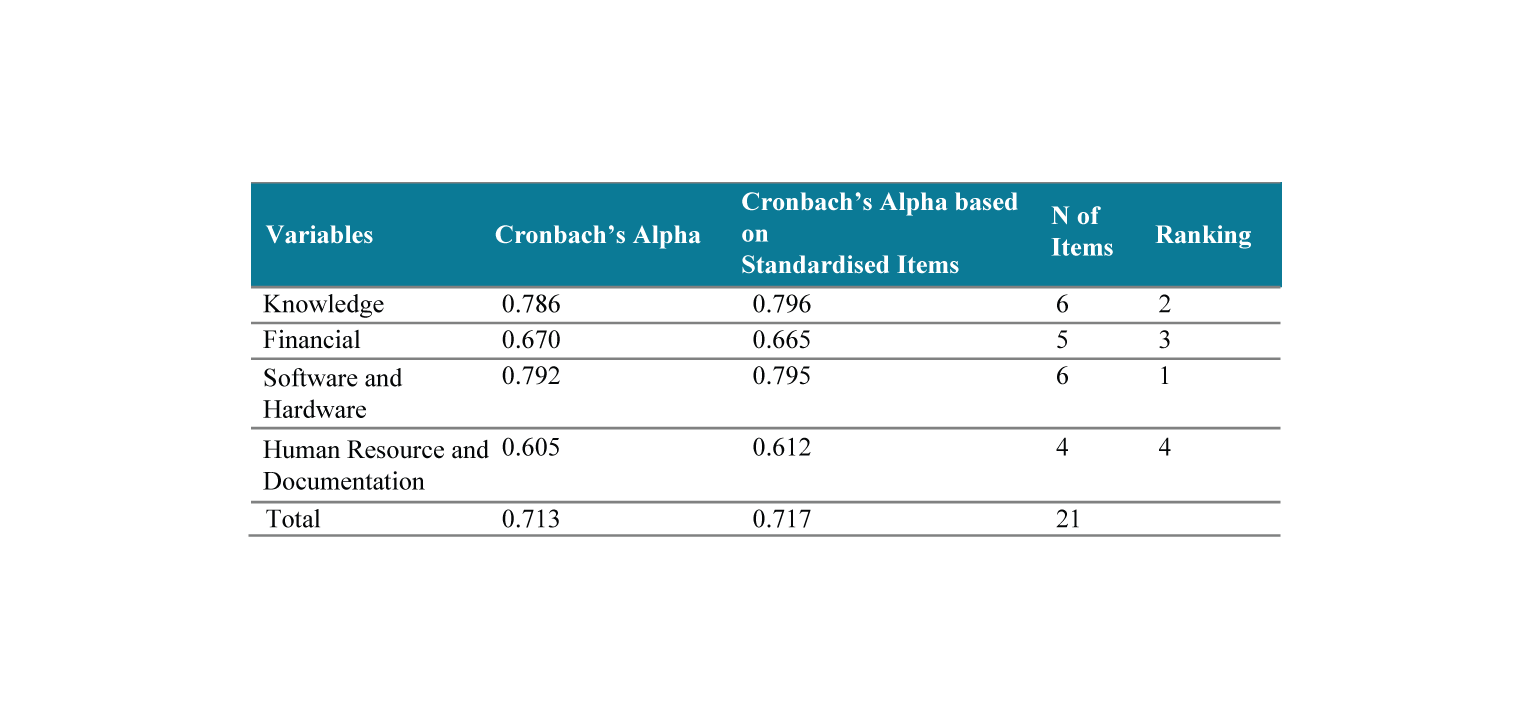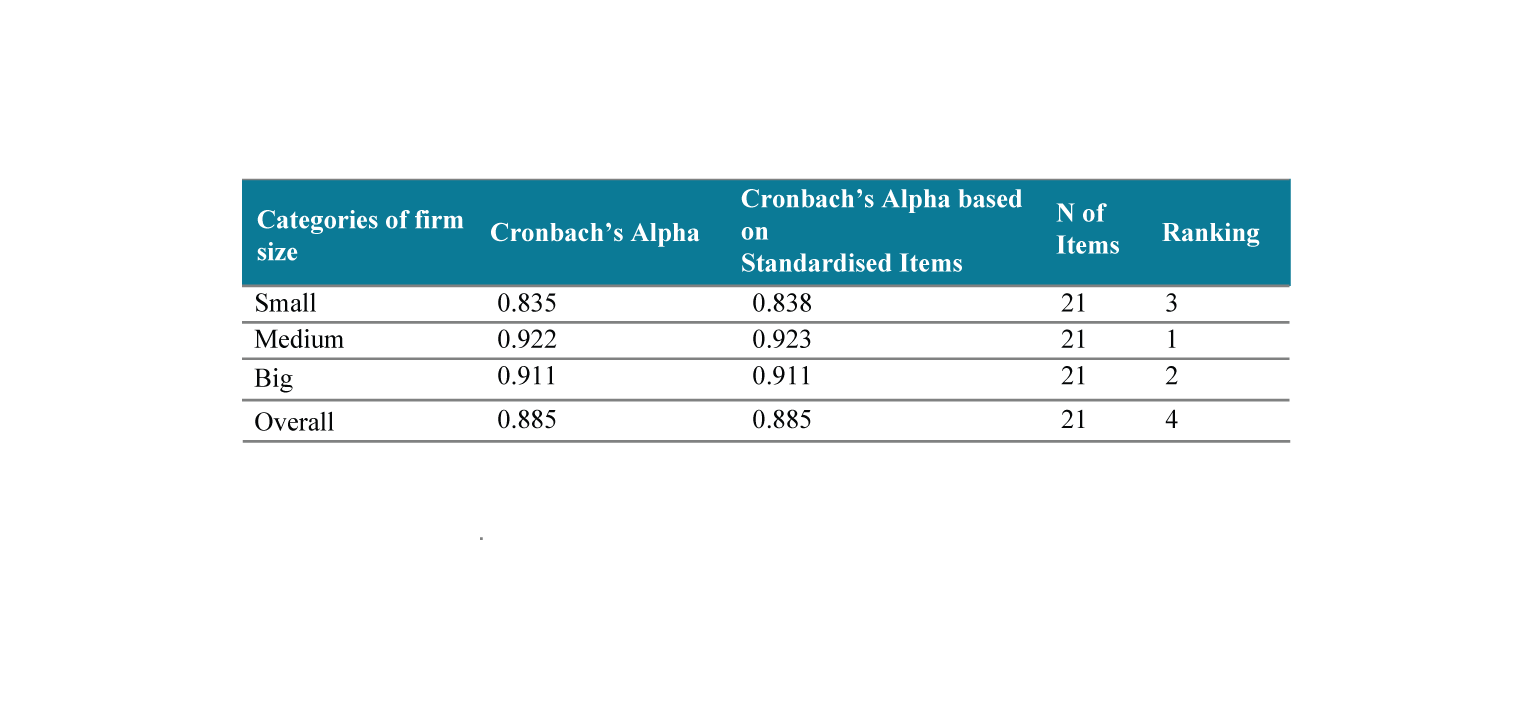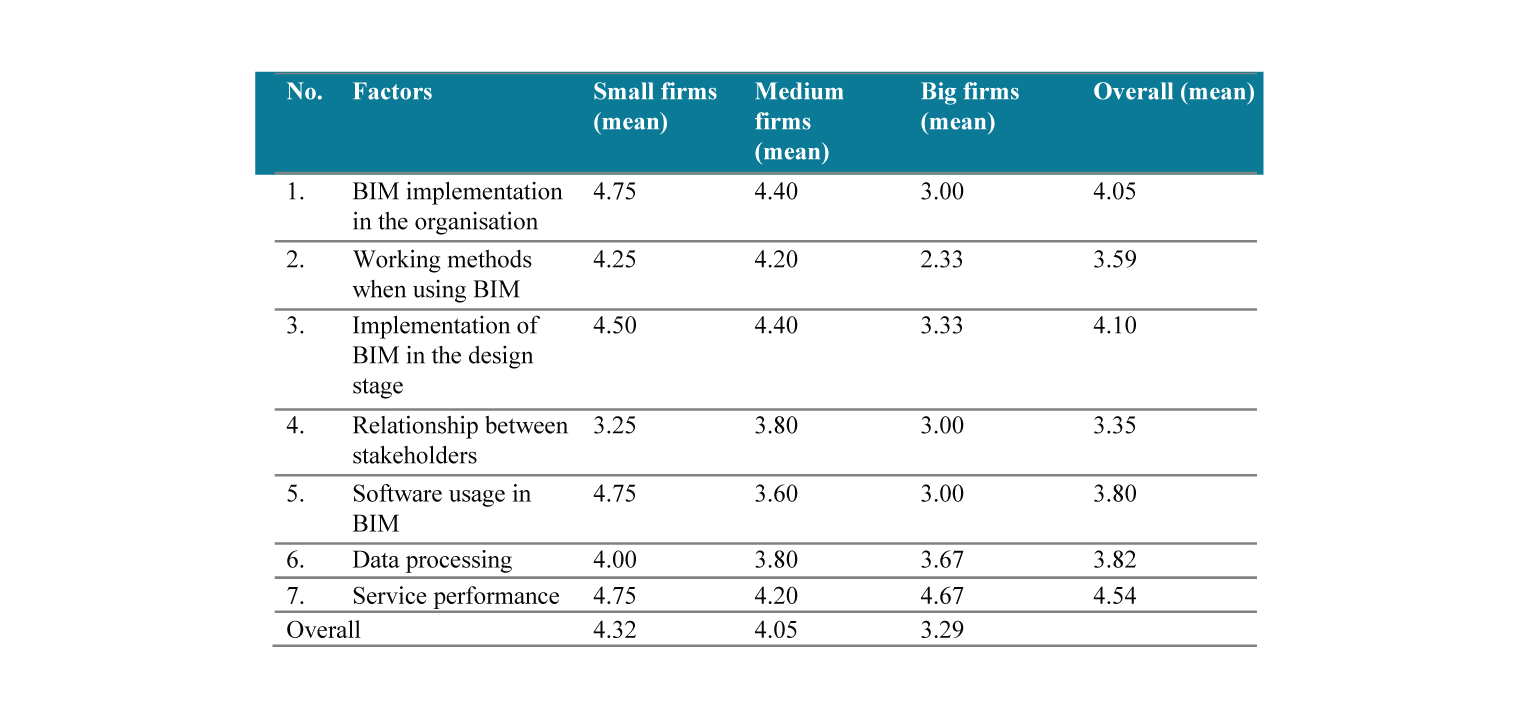1 Abu Bakar Abd Hamid, 2 Muhammad Danial Ismail, 3 Norashikin Rahmat
1.2 Interior Architecture Studies, School of Architecture and Interior Architecture, College of Built Environment, Universiti Teknologi MARA, 42300 Bandar Puncak Alam, Selangor Malaysia
3 The Centre for Postgraduate Studies, College of Built Environment, Universiti Teknologi MARA, 40450 Shah Alam, Selangor Malaysia
Abstract. Building Information Modelling (BIM) is a type of technology and tool that has tremendous potential to improve the quality of implementation in the architecture, engineering, and construction (AEC) industries. Nowadays, the development of digitalised industries and innovative technologies has increased efficiency and effectiveness to enhance services and processes, by creating a new paradigm in design or build development with high demands in the construction industry. The use of BIM in the interior design industry is still behind other construction industries. The benefit of using the BIM approach is broadly discussed in the literature; nevertheless, it is hard to achieve with the limited intention of minimising the barriers while implementing this technology. This research was conducted on sixty-three selected interior design firms registered with Lembaga Arkitek Malaysia (LAM) in the Klang Valley. The findings of the research contribute to the framework of readiness among interior design firms using BIM technology.
Keyword: Interior Design, Building Information Modelling, Readiness, Construction Industry, Design Process
Introduction
The abbreviation of BIM, Building Information Modelling, is extracted from the idea of technology modelling that uses standard modelling to integrate information in various construction areas and develop intelligent virtual models [1].
BIM is not about technological aspect alone; however, multi-factors are covered, such as
• the level of a building’s lifecycle-design,
• construction operation,
• documentation,
• human resources,
• and collaboration with the stakeholder [2].
By having the capacity to describe the information and form, BIM technology aims to ensure that performance activities extend a building’s lifecycle [3].
Likewise, BIM is also defined as the development of a computer-generated model in a process to encourage focus on the planning, design, construction, and operation of facilities [5]. According to [6], it is stated that BIM is defined as a developing digital technology that can enhance the accuracy of the virtual model of a building itself. Once completed, the relevant data are generated, such as construction, fabrication, and procurement, to develop the building intent.
Malaysia is still looking at implementing BIM in the construction industry. Nevertheless, issues arise when BIM is not implemented, such as
• a lack of construction materials,
• a lack of staff and human resources,
• a lack of knowledge,
• and communication problems among designers and contractors.
The beginning of an era using the computer as a symbol of the information phase has brought boundless changes to all aspects of modern society. Interior design is a new industry, but it will also predictably be affected. Interior design, with the development of the information age, showed the following trends: digital, exchange of information, convenient design tools, and intelligent living spaces. Designers are not only considered to be in the information age due to the computer usage as a medium of modern design, but what is more important is to have quick and accurate clench, control, and the ability to use a variety of information.
Research Background
Nowadays, the construction industry is rapidly developing in terms of time and technology. The increased use of technology in the construction industry has enabled smooth construction work from the beginning of the phase until the end. The practise of innovative technology has been realised with the implementation of BIM, which is a very efficient and demonstrative technology in all aspects,especially in the construction industry.
Furthermore, it has changed how the construction industry works since it moves within an innovative paradigm with increasing productivity, efficiency, and quality while reducing project delivery time and cost to achieve its highest potential [7]. BIM is a significant technology to implement since it adopts building development with different approaches based on the complexity of the construction phases [8].
The impression of BIM is to construct a building virtually, prior to building it substantially, and then simulate the problems and analyse the possibility waves [9]. The development trend of interior design in the information age can be divided into three (3) groups:
With digital design tools, interior design should have followed the trend to make sure interior designers
could do the design faster and easier
Key Factors for Variables in BIM Adoption in Interior Design Firms
In this study, the key factors for variables determined in BIM implementation in interior design firms were divided into four (4) indicators: Knowledge, Financial, Software and Hardware, and Human Resource and Documentation (Figure 1). According to [20], the survey process is a crucial part of the conceptual process used to identify the barriers and variables in research problems. From the analysis of the literature review and data collection, the development framework was developed according to the four (4) factors derived from the variables in BIM adoption by interior design firms.
The Key Factors of Barriers BIM Implementation for Interior Design Construction
The data were processed using SPSS software to conduct Cronbach’s Alpha analysis which is meant tomeasure the consistency of a scale or test. The obtained results were based on the participation of 63 respondents from selected interior design firms. The firms were divided into three (3) categories, which include small interior design firms, medium interior design firms, and big interior design firms. This shows that the survey instrument was consistent and has a high level of reliability.
Table 1 illustrates the Cronbach’s Alpha scores which were measured for all four (4) scales of Knowledge, Financial, Software and Hardware, and Human Resource and Documentation, where the scores were within the reliable range of 0.60 to 0.70. This finding indicates that the survey instrumentused was internally consistent and had a high degree of reliability. The Cronbach’s Alpha revealed that the Knowledge variables score was 0.786, with six (6) items, while the Software and Hardware variables score was 0.792 with six (6) items. However, for Financial, as well as Human Resource and Documentation, the scores for each variable were 0.670 with five (5) items and 0.605 with four (4) items, respectively.
Table 1: Cronbach’s Alpha Values for The Four (4) Variable Categories
In the categories of firm size, each size was determined by four (4) variables:
Knowledge,
Financial,
Software and Hardware,
and Human Resource and Documentation.
The descriptive analysis determined the score for each firm size based on the variables. With reference to Table 2, the scores were within a suitable range of 0.830 to 0.920. The descriptive analysis was based on the 21 items in the BIM variables.
Table 2: Reliability Values for the Three Categories of Firm Size.
The Level of Satisfaction of BIM Usage in the Interior Design Firms
Based on Table 3, the levels of satisfaction among the interior design firms were measured based on several factors. The descriptive analysis exhibited that the level of satisfaction for Small interior design firms was a mean score of 4.32, a mean score of 4.05 for Medium interior design firms, and a mean score of 3.29 for Big interior design firms. This makes the Small interior design firms’ satisfaction level as highest with an overall mean score of 4.32. All variables would at least have one very satisfied indicator, particularly in Small interior design firms, but one variable, Relationship between Stakeholders, showed a dissatisfied indicator with a mean score of 3.25. This means that while using BIM, the relationship can either be apparent or vice versa regarding the adoption of BIM in the design process stages. Compared to other variables of BIM Implementation in the Organisation, Software Usage in BIM and Service Performance revealed mean scores of 4.75. However, the Implementation of BIM during the Design Stage was in equilibrium, with a mean score of 4.50.
The overall mean score for Medium interior design firms was 4.05. With the descriptive analysis, the most satisfying level was BIM Implementation in the Organisation and BIM Implementation in the Design Stage, with a mean score of 4.40. Regarding both variables with higher levels of satisfaction, these indicate that the cooperation between organisations can be achieved with the implementation of BIM in the design stage. Here, only one variable--Software Usage in BIM — reported dissatisfaction in the satisfied level.
Table 3: Mean Scores of Satisfaction Levels towards BIM Usage in Interior Design Firms
Table 3 shows that Service Performance achieved the highest rank for the overall mean with a4.54 mean score, while Implementation of BIM in the Design Stage ranked second with a 4.10 mean score. BIM Implementation in the Organisation ranked third with a 4.05 mean score. For Small firms, Service Performance, Software Usage in BIM, and BIM Implementation in the Organisation receivedthe highest rank with a 4.75 mean score. Meanwhile, for Medium firms, BIM implementation in the organisation and implementation of BIM in the design stage were ranked highest at a 4.40 mean score.
As for Big firms, service performance had the highest mean score of 4.67, followed by data processing with a mean score of 3.67, and implementation of BIM in the design stage with a 3.33. It can also be seen from the table that it is crucial for the interior design industry to adopt and adapt BIM technology,especially at the design stage before construction begins.
Findings and Recommendations
The primary exploration of this study focused on evaluating the current scenario of BIM usage amonginterior design firms in Malaysia. It identified a variety of variables and barriers as key factors why interior design firms are still behind in using BIM compared to other architecture, engineering, and construction (AEC) industries. However, through descriptive statistics, it can be noted that small interior design firms frequently find it harder to implement BIM compared to medium and big interior design firms. In assessing the barriers (knowledge barriers, financial barriers, software and hardware barriers, and human resource and documentation barriers), it can be determined that smaller interior design firms are more affected by these barriers than big interior design firms. It was also found that the governmental barrier is not an issue with knowledge barrier. Meanwhile, financial barrier is the most significant barrier among the four (4) barriers presented.
Conclusion
The main aim of this research was to improve the implementation and usage of BIM in the interior design industry for construction in the Malaysian context. From the descriptive statistics results, it is evident that the driving key factor that affects interior design firms’ use of BIM is reliant on the size of the firms. There are four (4) key factors that influence the implementation of BIM in the interior design industry. These four key factors determine the readiness of how to enhance the BIM implementation for interior designers in the design process and also increase knowledge and skill in interior design construction.
In general, the framework describes the potential of improving BIM usage for interior design firms. The framework outlines four driving factors (Knowledge, Financial, Software and Hardware, Human Resource and Documentation), which contains 28 potential improvements and ten additional improvements for BIM usage in interior design firms. Each of the criteria describes the potential to increase BIM usage, and firms need to develop their capabilities in order to implement BIM.
Acknowledgement
Authors would like to acknowledge the interior design firms for generous support on informative discussion and opinion on this research. The authors also would like to thanks to whom assist along the research progress for contributing part an encouragement of this research.
References
[1] Lee S and Ha M 2013 Customer interactive building information modelling for apartment unit design Automotive Cons 35 424–430.
[2] Isikdag U and Zlatanova S A 2009 SWOT analysis on the implementation of Building Information Models within the Geospatial Environment. In Urban and Regional Data Management; UDMS Annual 2009 Taylor & Francis Group; CRC Press: Wageningen, The Netherlands 15–30.
[3] Zima K, Plebankiewicz E and Wieczorek, D A 2020 SWOT Analysis of the use of BIMtechnology in the Polish Construction Industry Buildings 10, 16.
[4] NIBS (National Institute of Building Sciences) 2007 The national building information modelling standards (http://www.wbdg.org/pdfs/NBIMSv1_p1.pdf).
[5] Azhar S, Hein M and Sketo B 2008 Building information modelling: Benefits, risks and challenges Proceeding 44th Associated Schools of Construction (ASC) National Conference, Associated Schools of Construction, Fort Collins, CO.
[6] Eastman C, Teicholz P and Sacks R 2008 BIM handbook: A guide to building information modelling for owners, managers, designers, engineers, and contractors Wiley, Hoboken NJ.
[7] Azhar S, Nadeem A, Mok J Y N and Leung B H Y 2008 Building information modelling (BIM): A new paradigm for visual interactive modelling and simulation for construction projects Proc., First Intern Conf on Const in Developing Countries, Karachi, Pakistan 435–446.
[8] Chen L and Qu H 2011 Evaluation for Economics and Legislative Factors Influence the Design Team and Contractor throughout a Building Project from Inception to Completion', Journal of System and Management Sciences Vol. 1(1).
[9] Smith D 2007 An Introduction to Building Information Modelling (BIM). Journal of Building Information Modelling (JBIM) 12-14.
[10] Yi H. and Wang W 2016 The Application of Building Information Modelling in Interior Design. 6th International Conference on Sensor Network and Computer Engineering (ICSNCE 2016), Atlantis Press. 165
Construction Industry Development Board (CIDB)
Tingkat 11, CIDB 520
The MET Corporate Towers
No 20 Jalan Dutamas 2
50480 Kuala Lumpur, Malaysia
Tel: 0340477000
Email: cidb@cidb.gov.my
Access Portal SMART CIDB on your mobile device by scanning the QR code.







